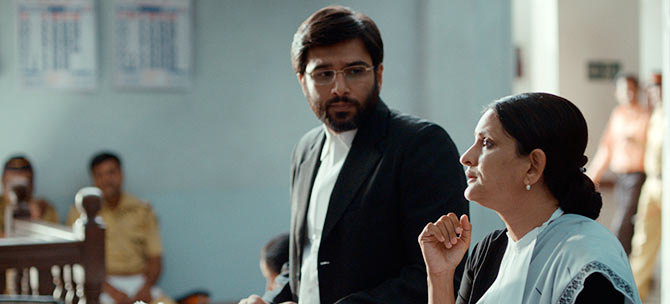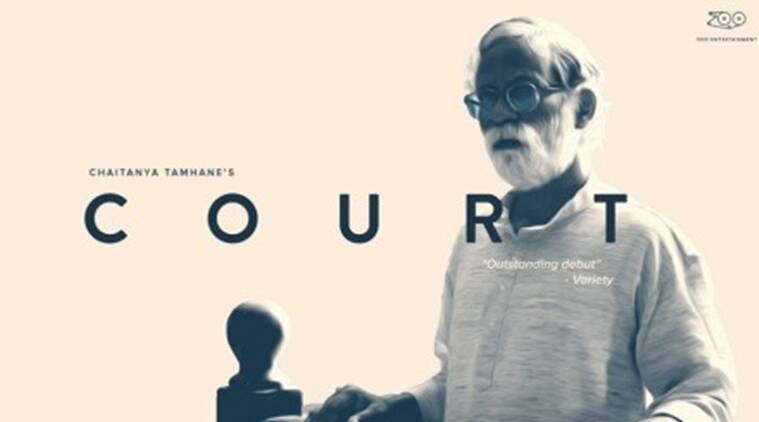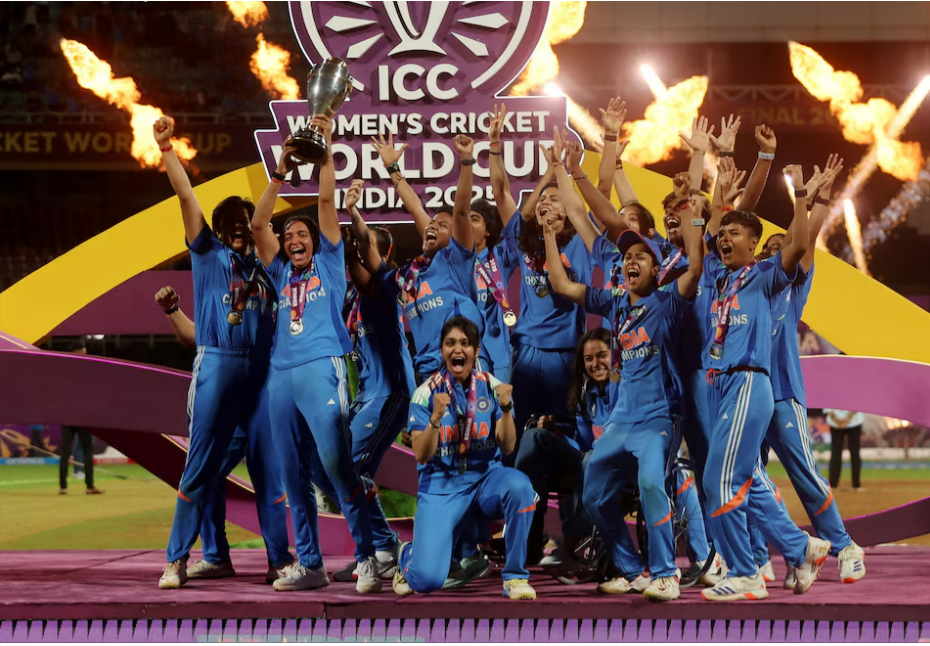What does the film Court (2014) do to your carefully nurtured, shiny “potted-plant” like middle class sensibility? It plants a punch straight and square, where you feel it in your gut, that is, only if you have one and validate it from time to time.
Court, an Indian multilingual legal drama, written and directed by Chaitanya Tamhane in his directorial debut, is an unbelievably powerful film. It quite surpasses anything you may have experienced. It reconfigures the aesthetics of film making. There’s a certain rhythm to the screenplay and the camera remains static till it begins to trigger you with its distant yet subversive gaze and leaves you unnerved.
The economy of the narrative and the precision with which it unfolds is unsettling. It says so much without saying or showing much. It is like moving in real time, like a Beckett or a Pinter play. Though there is a negative critique of the film that it fails to show the significance or the relevance of the case in question, so much would be lost and undercut if the case and its specificities had been highlighted.
Court has one and only one protagonist: the Court. We have to make do with this one, even though this protagonist is so Alfred Prufrock-like: petty-bourgeoisie, mediocre, indifferent, mostly asleep and an underperformer. It takes up all the space and all the time displacing the one person from the narrative who has the potential to become a hero of mythic proportions because isn’t that exactly what the court as an institution of law invariably does?
A Dalit-Bahujan artist-activist Narayan Kamble (Vira Sathidar) is arrested in the middle of a performance under the absurd charge of aiding and abetting the suicide of a manual scavenger Vasudev Pawar who died while cleaning a manhole. Allegedly, Pawar committed suicide after listening to a song performed by Kamble urging all scavengers to die rather than live a life of indignity.
Kamble’s defence is a lawyer Vinay Vora (Vivek Gomber) and since a good part of the initial narrative focuses on Vora, the middle class viewer-consumer in us immediately roots for him as the protagonist. We see Vora in all too familiar settings – buying provisions from a quiet upmarket store, in his own apartment, with his parents, at a bar with friends, having lunch in a restaurant and then also in the rundown neighbourhood in relation to the case of Vasudev Pawar and we feel proud of him that he is someone with his heart in the right place. He is doing legwork. He cares for his client and in all probability he is fighting the case pro bono.
The camera takes us through Narayan Kamble’s case and it is nothing like the court scenes we have witnessed in the diegetic space of films till now. The lawyers read (instead of speak) in a monotonous drawl, mostly without any emotion or passion. They do not engage in heated exchanges or titillate us with wisecracks and rejoinders. There is no courtroom drama
Just as we are about to settle down with our hero and ready to know more about him and how he fights the case, the camera shifts its focus in a tiresomely arbitrary way to the public prosecutor (Geetanjali Kulkarni), a middle-aged, middle-class woman. We follow her travelling in the local train and then in different spaces, having insipid exchanges, cooking, serving food, watching a play and at work, and infer absolutely nothing despite trying our hardest. We are made to overhear her casual remark to her colleagues about the Narayan Kamble case and how the court should just sentence him for 20 years and move on to the next case and a new face. We are left hunting for the plot and our hero.

The camera takes us through Narayan Kamble’s case and it is nothing like the court scenes we have witnessed in the diegetic space of films till now. The lawyers read (instead of speak) in a monotonous drawl, mostly without any emotion or passion. They do not engage in heated exchanges or titillate us with wisecracks and rejoinders. There is no courtroom drama. Kamble, when he is questioned and crossed by the prosecution answers most matter-of-factly.
The police inspector makes cryptic utterances when questioned and crossed. Judge Sadavarte (Pradeep Joshi) is appropriately detached and objective and does not have to admonish anybody hammering “order” “order”.
We see that to be able to grieve in India is a caste-class privilege. Sharmila cannot afford the luxury of mourning her husband. We also see and realise our middle class privilege that allows us to try and be the good Samaritan, that allows us the satisfaction of offering small change, the luxury of philanthropy and moving on without really bothering too much about institutionalised oppression or thinking about the need for systemic change
Sharmila Pawar (Usha Bane) the wife of the deceased is summoned and makes her statement and we imagine perhaps she is the hero. Her husband was a manual scavenger. He had to enter manholes without any protective gear or equipment. He may have lost the sight in one eye because of prolonged exposure to the sewage gases inside the hole, according to a doctor who had examined and treated his eye. He’d test the oxygen in the manhole by throwing a pebble and waiting for an insect to come out. He’d consume large quantities of alcohol before entering a manhole to be able to bear the stench. She makes simple, matter-of-fact statements. Understated facts conveyed routinely to the court. We squirm.
Also read: The Need To Navigate Formal Legal Processes Through Trauma-Informed Lawyering
Later, we see Vora dropping Sharmila in his car. She asks him if he can find some work for her. He offers money as a stopgap arrangement. She responds that she needs work and does not have much time for the court because whatever little savings she had are fast dwindling. A casual exchange but one that makes us squirm again. We see that to be able to grieve in India is a caste-class privilege. Sharmila cannot afford the luxury of mourning her husband. She has no interest in the court. She knows too well and now we do too, that manual scavengers die – sooner or later. She has to think of making two ends meet.
We also see and realise our middle class privilege that allows us to try and be the good Samaritan, that allows us the satisfaction of offering small change, the luxury of philanthropy and moving on without really bothering too much about institutionalised oppression or thinking about the need for systemic change.

Narayan Kamble is subsequently acquitted and goes back to performing on stage. We see the fire in his eyes and hear the thunder in his voice and witness his scathing critique of all that passes as art – art that has failed to challenge the status-quo and the structures of power that enable discrimination, invisibilisation, marginalisation and oppression. Art that is sanitised and that has failed to bring about reform, and his angry appeal to people to therefore not address him as an artist.
The court like the judge, is in a state of slumber. It does wake up at times when the cries get too loud, when the cacophony jars the tranquillity, slaps a verdict, punishing the most vulnerable and convenient, acquitting the rest and goes back to its state of slumber
His incandescent and unsettling performance is followed by that of a bunch of kids in razzle-dazzle doing dance moves on some popular song. The punch lands in the gut. We see what heroic effort and Sisyphus-like will it must demand of Narayan Kamble to rise every time he is shoved and quelled, and to use any, whatever platform is available to say what he has to say knowing too well what he is saying is often being consumed as entertainment and not a plea. We understand exactly why he cannot be heroized.

Narayan Kamble is booked again, this time under the Unlawful Activities (Prevention) Act, (UAPA) for flaming seditious sentiments under the pretext of conducting workshops on folk music and theatre. The state’s insidious pattern of incriminating the Naryan Kambles of India is evident as is the judiciary’s complicity in crushing voices of dissent.
The film cuts from the judge denying Naryan Kamble bail to leaving for a vacation with family and friends. The subsequent scenes are gut-wrenching (again only if you have a gut and validate it). Suddenly, you see the middle class obscenely exposed – the smugness and the pettiness of the native imperialists rooted in tradition chasing global dreams, looking out for their own, existing in their bubble of privilege.
Also read: A Dalit Woman’s Body In The Indian Courtroom
The camera won’t let you budge; you are privy to standard middle class conversations that hinge on material success and prosperity, exposing the self-centeredness of the bourgeoisie. Packages in the IT and other sectors are discussed. Judge Sadavarte advises a younger man to make his son (who has not started to speak yet) wear a gemstone and change the child’s name after consulting a numerologist. This is savarna India, steeped in tradition that defies a rational, scientific outlook and simultaneously chases global material pursuits.

The final scene captures the judge snoozing when children gather around him and startle him with their cry. The annoyed judge slaps the kid closest who is a second late to run off and goes back to his snooze. The court like the judge, is in a state of slumber. It does wake up at times when the cries get too loud, when the cacophony jars the tranquillity, slaps a verdict, punishing the most vulnerable and convenient, acquitting the rest and goes back to its state of slumber.
Justice is accidental in an Indian court but to dole out injustice requires collaboration and careful orchestration.
Featured Image Source: Indian Express
About the author(s)
Dr. Shyaonti Talwar is an academician, researcher and a writer whose areas of interest include popular culture, social inequality, literature, mythology and gender. A poet and a performing artist, she loves creative expressions and feels it is important to voice her critical observations. Writing is therapeutic for her and makes her feel awake and alive. She can be found on LinkedIn and Twitter.




